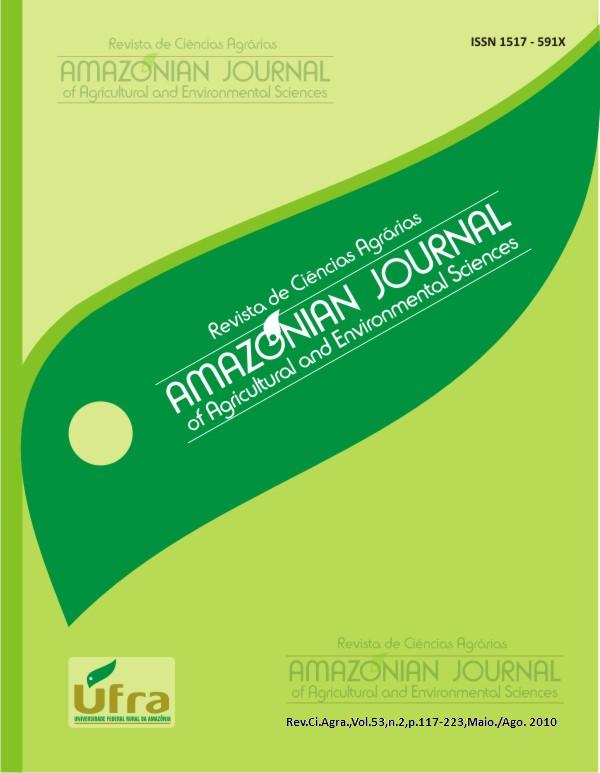Genotypic assessment of cassava accessions in Amazonas and estimates of genetic parameters
Abstract
The present study reports the evaluation of genotypic demandioca 250 hits in the State of Amazonas, to the characters commercial yield, starch content in the roots, amount of rotten roots, number of roots per plant, root length and diameter, and features also estimates of genetic parameters (heritability and genetic correlations) that allow us to infer the genetic control and level of genetic variability present in the material evaluated. Methodology was employed REML / BLUP. It was found that the germplasm collection presents considerable genetic variability, except for starch content. Thus, there are good prospects for genetic improvement. The low heritability of verified individual plots (2% to 18%) are consistent with the quantitative and polygenic nature of these characters. The improvement of these characters is fully possible and can be performed efficiently by adopting an appropriate number (5 to 20) repetitions of the experiments. Genetic correlations between production of commercial roots and its component traits (amount of rotten roots, number of roots per plant, length and diameter of roots) amounted to - .12; 0.33; 0.23 and 0.35, respectively, all significant by t test. Thus, the commercial production of roots is positively correlated with the diameter and length of roots and the number of roots per plant. On the other hand, is negatively correlated to the amount of roots rotted. This paper describes the genotypic evaluation of 250 cassava accessions in the state of Amazonas to the characters commercial yield, starch content in the roots, amount of rotten roots, number of roots per plant, length and diameter of roots and also presents estimates genetic parameters (heritabilities and genetic correlations) that allow us to infer the genetic control and level of genetic variability present in the material evaluated. Methodology was employed REML / BLUP. It was found that the germplasm collection presents considerable genetic variability, except for starch content. Thus, there are good prospects for genetic improvement. The low heritability of verified individual plots (2% to 18%) are consistent with the quantitative and polygenic nature of these characters. The improvement of these characters is fully possible and can be performed efficiently by adopting an appropriate number (5 to 20) repetitions of the experiments. Genetic correlations between production of commercial roots and its component traits (amount of rotten roots, number of roots per plant, length and diameter of roots) amounted to -0.12; 0.33; 0.23 and 0.35, respectively. Thus, the commercial production of roots is positively correlated with the diameter and length of roots and the number of roots per plant. On the other hand, is negatively correlated to the amount of roots rotted.
Downloads
Authors retain copyright and grant the Journal the right to the first publication. Authors are encouraged to and may self-archive a created version of their article in their institutional repository, or as a book chapter, as long as acknowledgement is given to the original source of publication. As the Journal provides open access to its publications, articles may not be used for commercial purposes. The contents published are the sole and exclusive responsibility of their authors; however, the publishers can make textual adjustments, adaptation to publishing standards and adjustments of spelling and grammar, to maintain the standard patterns of the language and the journal. Failure to comply with this commitment will submit the offenders to sanctions and penalties under the Brazilian legislation (Law of Copyright Protection; nº 9,610; 19 February 1998).


.jpg)









